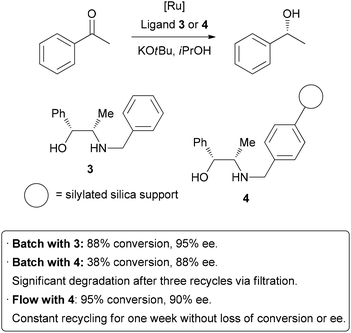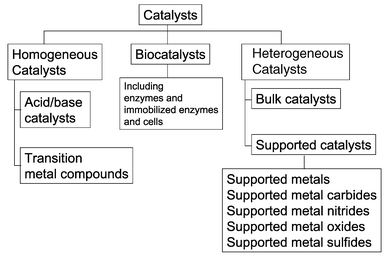
[(2-{2-[2-(Bis-methoxycarbonylmethylamino)phenoxy]ethoxy}-4-benzimidazole-phenyl)methoxycarbonylmethylamino]acetic
acid methyl ester
1-(2-Chloroethoxy)-2-nitrobenzene 1

1-Bromo-2-chloroethane (4.30 g, 0.03mol) and K2CO3 (2.07
g, 0.015 mol) were added to a solution of 2-nitrophenol (1.39 g,
0.01mol) in DMF (8 mL) at room temperature, the reaction was kept at 120
ºC for 5 h, cooled and diluted with EtOAc (20 mL), then washed with
water (3 × 10 mL). The organic layer was collected and concentrated
under vacuum, recrystallized in MeOH to give light yellow solid 1. Yield 93%;
m. p. 36-37 ºC;
1H NMR (CDCl3, 400 MHz) d 7.85 (m, 1H), 7.56 (m, 1H), 7.10 (m, 2H), 4.40 (t, 2H, J 12 Hz), 3.86 (t, 2H, J 12 Hz);
IR ν/cm-1 2926, 2875, 1608, 1522, 1343, 1276, 1026, 745, 667.
1-Nitro-2-[2-(2-nitrophenoxy)ethoxy]benzene 2

To a solution of 1 (2.01 g, 0.01 mol) in DMF (10 mL) at room temperature, 2-nitrophenol (1.39 g, 0.01 mol) and K2CO3 (2.50
g, 0.018 mol) were added. The reaction mixture was stirred at 140 ºC
for 4 h, cooled and poured into cold water (20 mL). The formed yellow
solid was filtered and washed with water (3 × 5 mL). The crude product
was recrystallized in MeOH to give yellow solid 2. Yield 95%;
m.p. 168-169 ºC;
1H NMR (CDCl3, 400 MHz) δ 7.83 (d, 2H, J 8 Hz), 7.57 (t, 2H, J 8 Hz), 7.24 (t, 2H, J 8 Hz), 7.08 (t, 2H, J 8 Hz), 4.54 (s, 4H);
IRν/cm-1 3051, 2956, 2931, 1606, 1582, 1518, 1359, 1278, 1159, 1090, 744, 671.
2-[2-(2-Aminophenoxy)ethoxy]benzenamine 3

Iron
powder (3.36 g, 0.06 mol), concentrated hydrochloric acid (0.2 mL), and
anhydrous ethanol (10 mL) were added into a dried three-necked flask
equipped with a magnetic stirrer. When the mixture was heated to
boiling,2 (3.04 g, 0.01mol) was added in three portions. The
mixture was refluxed for 4 h, and then made alkaline to litmus by
addition of 15% alcoholic potassium hydroxide solution, the iron powder
was removed by filtration afterwards. Into the filtrate, 6 mol L-1 sulfuric
acid was added and white precipitate was obtained. After filtration,
the precipitate was dissolved in 40 mL of warm water and made alkaline
to pH = 8 with saturated sodium hydroxide solution. The generated light
yellow solid was collected and recrystallized in MeOH to give white
solid 3. Yield 88%;
m.p. 116-117 ºC;
1H NMR (CDCl3, 400 MHz) δ 6.98 (m, 8H), 4.36 (s, 4H), 3.82 (s, 4H);
IR ν/cm-1 3432, 3355, 3059, 2934, 1612, 1507, 1461, 1276, 1217, 941, 739.
1,2-Bis(2-aminophenoxy)ethyl-N,N,N',N'-acetic acid methyl ester 4
Compound 3 (2.44 g, 0.01 mol) was dissolved in MeCN (10 mL), then (i-Pr)2NEt
(6 mL) and methyl bromoacetate (3 mL) were added to the mixture with
stirring. The reaction mixture was refluxed for 24 h. After the
reaction, the mixture was cooled down, poured into EtOAc (20 mL), and
filtered to remove the generated white solid. The combined EtOAc
filtrates were concentrated in vacuo to give an oily solid, then
adding a little methanol, white solid was generated, filtered, air dried
and recrystallized in MeOH to give white solid 4. Yield 87%; m.p. 94-95 ºC; 1H NMR (CDCl3, 400 MHz) δ 6.85 (m, 8H), 4.27 (s, 4H), 4.15 (s, 8H), 3.56 (s, 12H); IRν/cm-1 3067, 2993, 2951, 2921, 2888, 1748, 1596, 1509, 1173, 742, 706.
[(2-{2-[2-(Bis-methoxycarbonylmethylamino)-5-methylphenoxy]ethoxy}-4-formyl-5-methyl-phenyl)methoxycarbonylmethylamino]acetic
acid methyl ester 5
POCl3 (2.4 mL) was added dropwise over 40-45 min into a dry three-necked flask which contained anhydrous DMF (20 mL). The POCl3/DMF mixture was stirred at room temperature for 1-2 h and added dropwise into a DMF (20 mL) solution of compound 4 (5.32 g, 0.01mol) afterwards. The reaction mixture was heated at 75 ºC for 4 h, concentrated in vacuo, and then poured into ice water. The suspension was filtered and purified by column chromatography (silica gel, V(EtOAc):V(hexane) = 1:1 as eluent) to afford white solid 5.20 Yield 85%; m.p. 131-132 ºC; 1H NMR (CDCl3, 400 MHz) δ 9.80 (s, 1H), 7.38 (m, 2H), 6.86 (m, 4H), 6.76 (d, 1H, J 8.3 Hz), 4.31 (m, 2H), 4.27 (m, 2H), 4.24 (s, 4H), 4.15 (s, 4H), 3.57 (s, 6H), 3.56 (s, 6H); 13C NMR (CDCl3, 101 MHz) δ190.5,
171.9, 171.2, 150.1, 149.6, 145.0, 139.3, 129.9, 126.7, 122.2, 121.6,
116.5, 112.9, 110.5, 77.3, 77.0, 76.7, 67.3, 66.6, 53.4, 53.2, 52.0,
51.9, 51.6; IR ν/cm-1 3015, 2954, 2928, 1746, 1681, 1593, 1509, 1245, 1164, 747; HRMS calcd. for C27H32N2O11: 560.2006, (M+Na)+ calcd.: 583.1898, (M+Na)+ found: 583.1894.
[(2-{2-[2-(Bis-methoxycarbonylmethylamino)phenoxy]ethoxy}-4-benzimidazole-phenyl)methoxycarbonylmethylamino]acetic
acid methyl ester 6
A mixture of 1,2-phenylenediamine (0.11 g, 1 mmol), compound 5 (0.56 g, 1 mmol), H2O2 (30%, 4 mmol, 0.4 mL) and Fe(NO3)3·9 H2O
(0.04 g, 0.1 mmol) was heated at 50 ºC for 30 min. After completion of
the reaction, the reaction mixture was dissolved in EtOH (10 mL) and
then poured into ice-water (30 mL). The pure solid product was filtered,
washed with ice-water, dried and subsequently purified by column
chromatography (silica gel, V(EtOAc):V(hexane) = 1:1 as eluent)21,22 to afford white solid 6. Yield 80%;
m.p. 72-73 ºC;
IR (KBr, cm-1) 3505 (νN-H), 3033 (ν=C-H), 2906 (νC-H), 1743 (νC=O), 1509 (νC=C), 1478 (νC=C), 1170 (νC-O), 746 (δ=C-H);
1H NMR (400 MHz, CDCl3) δ 7.68 (d, 1H, J 8
Hz), 7.56 (s, 3H), 7.17 (s, 2H), 6.87 (m, 2H), 6.83 (m, 1H), 6.70 (m,
2H), 4.13 (s, 8H), 3.91 (m, 3H), 3.85 (s, 2H), 3.54 (s, 6H), 3.51 (s,
6H);
13C NMR (100 MHz, CDCl3) δ 172.2,
171.7, 152.2, 150.2, 149.9, 140.8, 138.7, 122.4, 121.4, 120.3, 118.9,
118.2, 112.8, 111.3, 77.4, 77.1, 76.8, 66.9, 66.5, 53.4, 53.3, 51.8;
HRMS calcd. for C33H36N4O10: 648.2431, (M+H)+ calcd.: 649.2504, (M+H)+ found: 649.2487.
The structure of 6 was characterized by IR, ESI-HRMS, PXRD, 1H and 13C NMR. IR spectrum of 6 shows typical secondary amine absorption (νN-H 3506 cm-1), aromatic absorption (ν=C-H 3033 cm-1; νC=C 1510, 1478 cm-1;δ=C-H 746 cm-1) and ester absorption (νC=O 1743 cm-1; νC-O 1171 cm-1). The HRMS m/z value, 1H and 13C NMR chemical shifts are in accordance with the structure of 6
http://www.scielo.br/scielo.php?script=sci_arttext&pid=S0103-50532014000100014&lng=en&nrm=iso&tlng=en

1H NMR PREDICT
13 C NMR PREDICT
Print version ISSN 0103-5053
J. Braz. Chem. Soc. vol.25 no.1 São Paulo Jan. 2014
http://dx.doi.org/10.5935/0103-5053.20130276
ARTICLE
Structural study and fluorescent property of a novel organic microporous crystalline material
Zhao Cheng; Bingqin Yang*; Meipan Yang; Binglin Zhang
Key
Laboratory of Synthetic and Natural Functional Molecule Chemistry of
Ministry of Education, College of Chemistry and Materials Science,
Northwest University, 710069 Xi'an, China
सुकून उतना ही देना प्रभू, जितने से जिंदगी चल जाये। औकात बस इतनी देना, कि औरों का भला हो जाये। DRUG APPROVALS BY DR ANTHONY MELVIN CRASTO …..FOR BLOG HOME CLICK HERE
DRUG APPROVALS BY DR ANTHONY MELVIN CRASTO …..FOR BLOG HOME CLICK HERE
Join me on Linkedin

Join me on Facebook
 FACEBOOK
FACEBOOK
Join me on twitter

 amcrasto@gmail.com
amcrasto@gmail.com

LIONEL MY SON
He was only in first standard in school when I was hit by a deadly one in a million spine stroke called acute transverse mylitis, it made me 90% paralysed and bound to a wheel chair, Now I keep him as my source of inspiration and helping millions, thanks to millions of my readers who keep me going and help me to keep my son happy
सुकून उतना ही देना प्रभू, जितने से
जिंदगी चल जाये।
औकात बस इतनी देना,
कि औरों का भला हो जाये।
//////





































 LIONEL MY SON
LIONEL MY SON